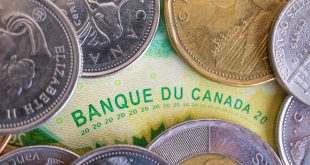Oil prices held steady on Thursday following a steep decline, as investors weighed Saudi Arabia’s willingness to tolerate lower prices, a potential increase in OPEC+ production, and weak U.S. economic data pointing to recession risks.
Brent crude futures slipped 6 cents, or 0.1%, to $61.00 a barrel by 07:30 GMT. U.S. West Texas Intermediate (WTI) crude fell 12 cents, or 0.2%, to $58.09 a barrel, after closing Wednesday at its lowest level since March 2021.
Saudi Arabia has reportedly informed industry insiders and allies that it is not planning further supply cuts to support prices and is prepared for a prolonged period of low oil prices. At the same time, several OPEC+ members are expected to propose accelerating output hikes for a second consecutive month when the group meets on May 5.
Adding pressure to prices, data on Wednesday showed the U.S. economy contracted in the first quarter for the first time in three years. The decline was attributed to a sharp increase in imports, as businesses rushed to front-load shipments ahead of new tariffs. Economists surveyed by Reuters believe Trump’s tariff policies are significantly raising the chances of a global recession in 2025.
In response to the weakening demand outlook, analytics firm Kpler downgraded its 2025 global oil demand growth forecast to 640,000 barrels per day, down from a previous estimate of 800,000 barrels per day. A Reuters poll of 40 economists and analysts now sees Brent averaging $68.98 per barrel in 2025, compared to a forecast of $72.94 last month. WTI is expected to average $65.08 per barrel, down from $69.16.
Despite the negative outlook, U.S. crude inventories fell by 2.7 million barrels last week, well above expectations for a 429,000-barrel increase. The draw was driven by stronger exports and rising refinery demand, according to data from the U.S. Energy Information Administration.
 Noor Trends News, Technical Analysis, Educational Tools and Recommendations
Noor Trends News, Technical Analysis, Educational Tools and Recommendations





